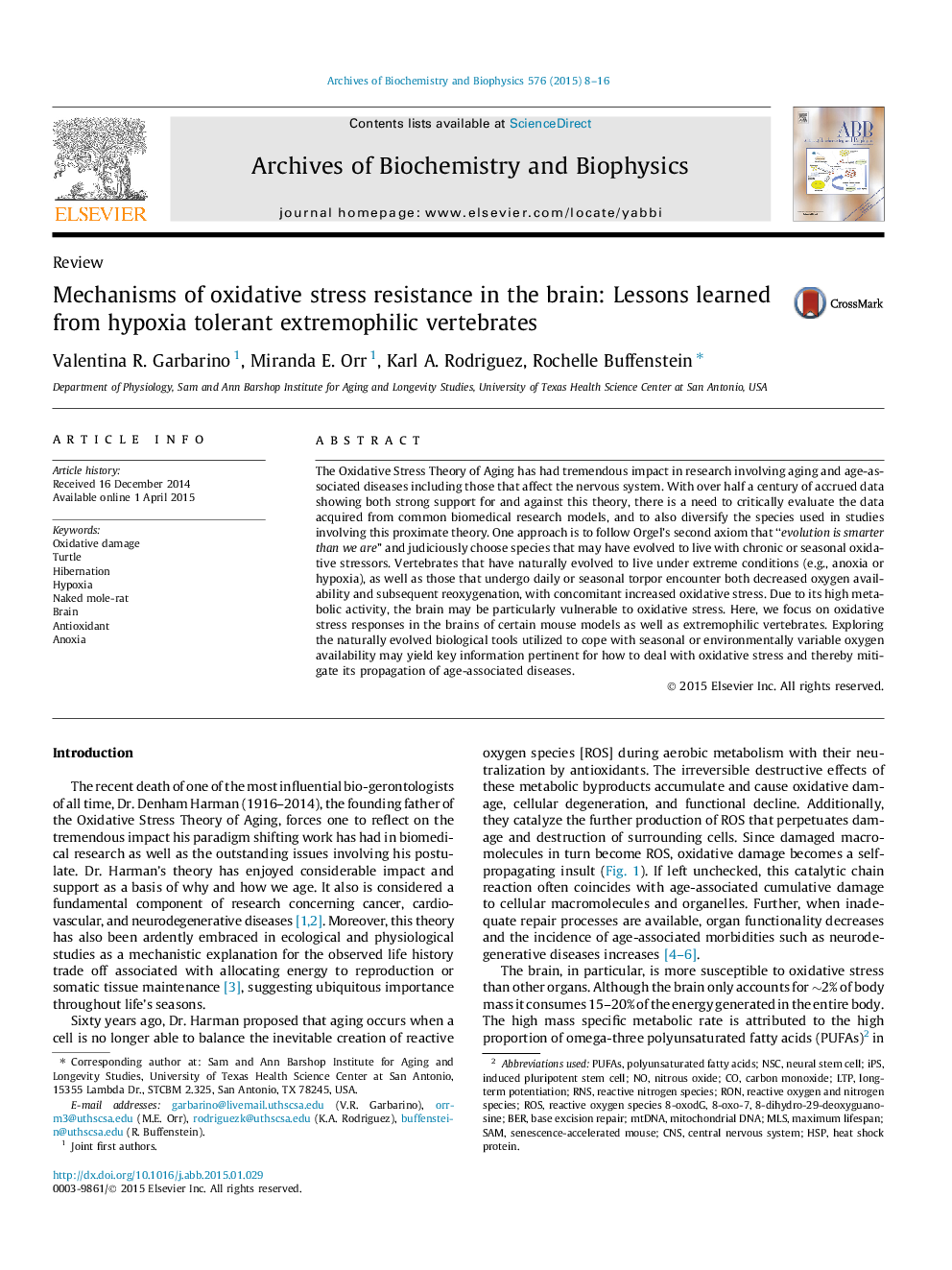| کد مقاله | کد نشریه | سال انتشار | مقاله انگلیسی | نسخه تمام متن |
|---|---|---|---|---|
| 1924926 | 1536326 | 2015 | 9 صفحه PDF | دانلود رایگان |
The Oxidative Stress Theory of Aging has had tremendous impact in research involving aging and age-associated diseases including those that affect the nervous system. With over half a century of accrued data showing both strong support for and against this theory, there is a need to critically evaluate the data acquired from common biomedical research models, and to also diversify the species used in studies involving this proximate theory. One approach is to follow Orgel’s second axiom that “evolution is smarter than we are” and judiciously choose species that may have evolved to live with chronic or seasonal oxidative stressors. Vertebrates that have naturally evolved to live under extreme conditions (e.g., anoxia or hypoxia), as well as those that undergo daily or seasonal torpor encounter both decreased oxygen availability and subsequent reoxygenation, with concomitant increased oxidative stress. Due to its high metabolic activity, the brain may be particularly vulnerable to oxidative stress. Here, we focus on oxidative stress responses in the brains of certain mouse models as well as extremophilic vertebrates. Exploring the naturally evolved biological tools utilized to cope with seasonal or environmentally variable oxygen availability may yield key information pertinent for how to deal with oxidative stress and thereby mitigate its propagation of age-associated diseases.
Journal: Archives of Biochemistry and Biophysics - Volume 576, 15 June 2015, Pages 8–16
